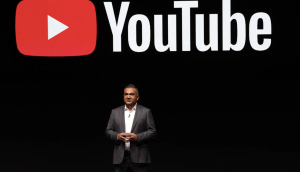To identify the work Canada’s media gurus think best exemplifies smart new media thinking, every Friday MiC invites guest curators to share Really Important Things That Are Happening in the mediaverse.
Today, Hugh Dow, chairman of Mediabrands Canada (which includes M2 Universal, J3, Initiative and Mediabrands Research), shares his perspective:
The key to unlocking true, groundbreaking media innovation increasingly relies on ‘connecting the dots.’ This involves tying together seemingly unrelated media developments into a synergistic package that opens the door to new media territory. Both the challenge and the opportunity lie in the fact that today the number of ‘dots’ is increasing at an exponential rate.
Let’s create an example by taking four recently announced unrelated media and technological developments that perhaps on the surface appear to have little to do with one another.
1. Time Inc. in the US is experimenting with an online customized magazine that allows readers to select articles from a menu of eight different Time Inc. magazines.
2. Amazon’s Kindle e-book titles now number 250,000. Sony has recently announced the addition of 500,000 e-book titles available on the Sony Reader through a partnership with Google.
3. The PPM (Passive People Meter) rolls out to measure both television and radio audiences in Canada’s top five markets. Canada now boasts the largest PPM sample in the world.
4. AT&T has announced that customers in Atlanta can now get a Netbook (the new breed of thin laptop computers not much bigger than a paperback) for just $50 when they sign up for an Internet service plan. The Netbook is an ultramobile blend of smartphone and computer technology.
Clearly the e-book is rapidly emerging as a contender to the centuries-old hard copy version. Perhaps this is an entry point that will provide some serious momentum for consumers to convert, over time, from hard copy to online reading. With print media (magazines and newspapers) struggling with crippling legacy costs such as paper, printing and distribution, surely there is the opportunity for the ‘e-mag’ or the ‘e-paper.’
The display devices could be Kindle, the Sony Reader the new netbook or something totally new, such as a foldable, paper-thin receiving device. A company such as Rogers, with its extensive portfolio of magazines, could offer customized selections on an ‘e-reader’. With up to 60% of a magazine’s cost taken up by paper, printing and distribution, the cost savings are attractive to say the least. Rogers could conceivably give away the ‘e-reader’ – particularly with an Internet/cable/phone package.
And then there is readership measurement. With the insertion of an encoded barcode type signal for each magazine (or page/advertisement), the PPM could add print readership to its television and radio measurement, or in other words, multimedia audience measurement from a single comparable source.
Just one example of how connecting seemingly isolated media developments could pave the way for innovation and business opportunities. Today there are probably as many dots as there are stars in the sky. We just have to be continually curious, imagine what could be and connect the dots.
Hugh Dow is chairman of Mediabrands Canada. Created by IPG in 2008 to manage its global media assets, Mediabrands’ companies in Canada include M2 Universal, J3, Initiative and Mediabrands Research.























